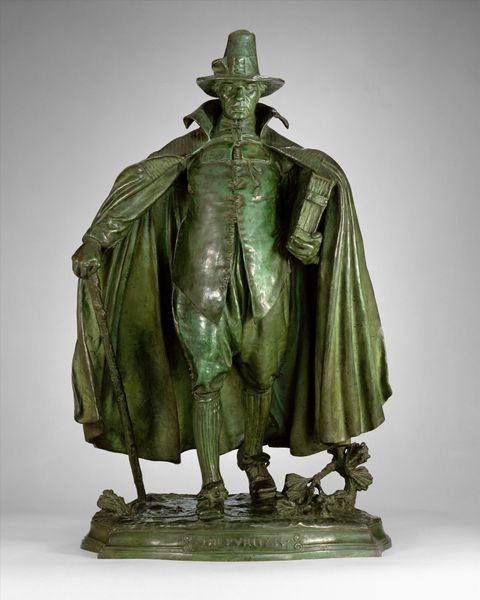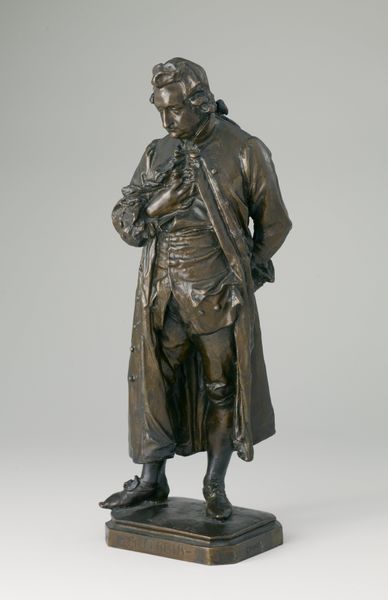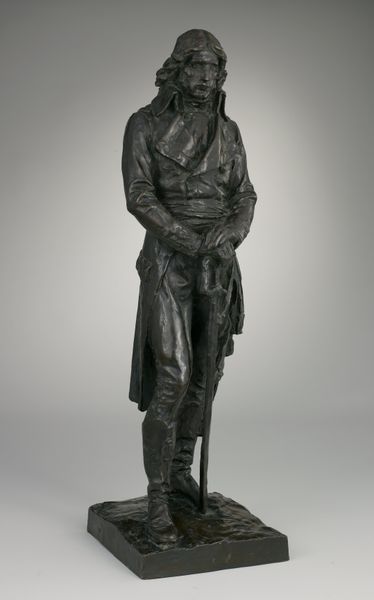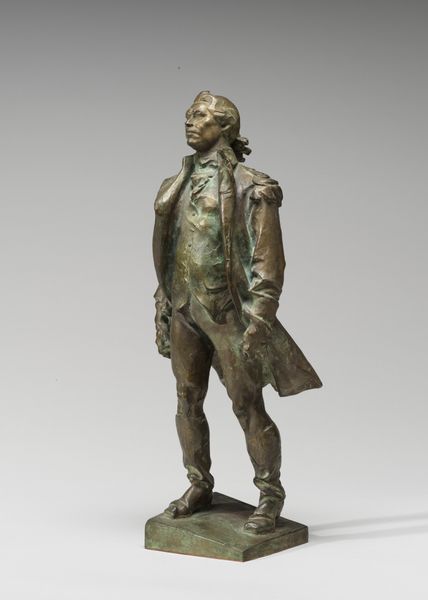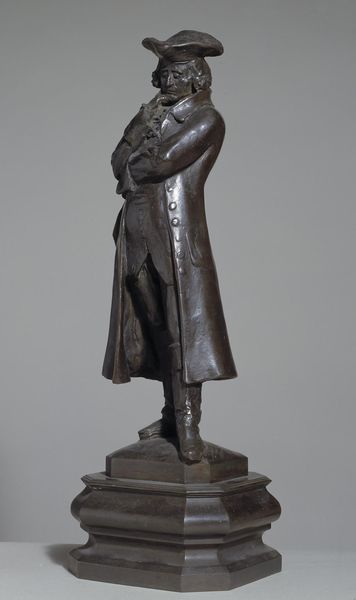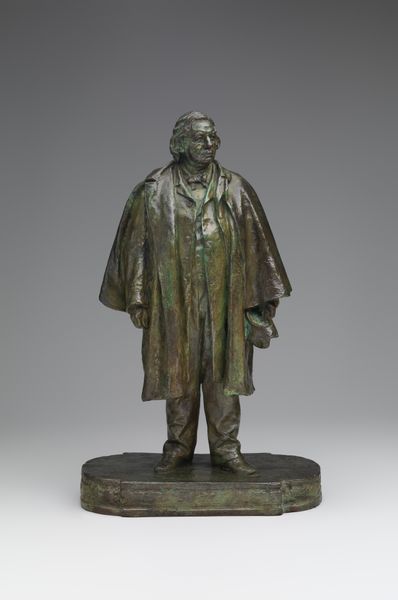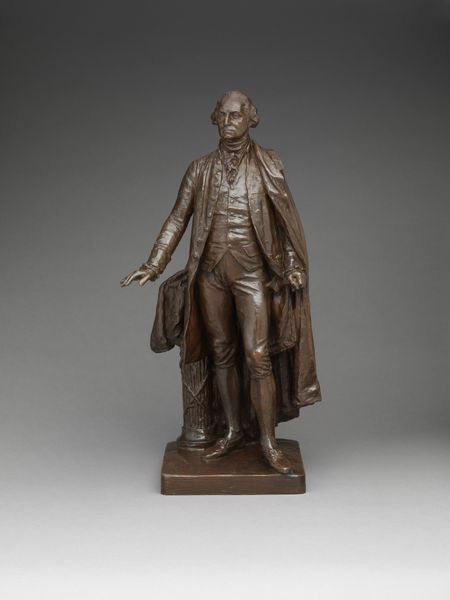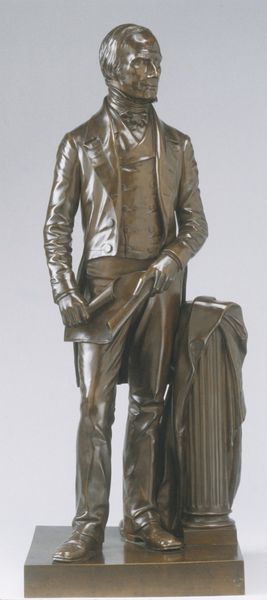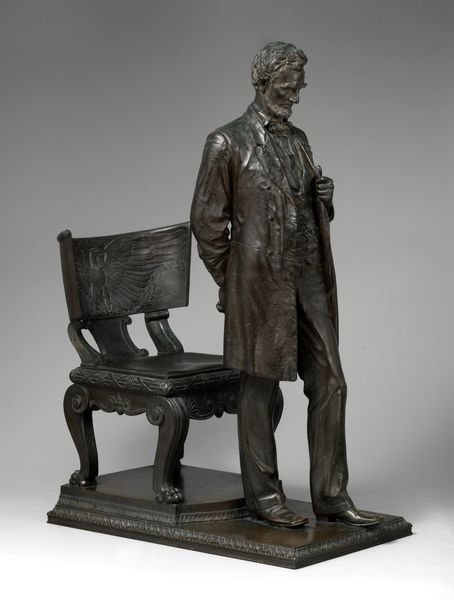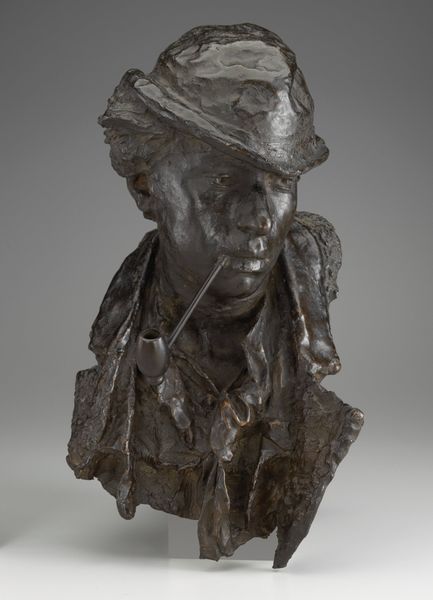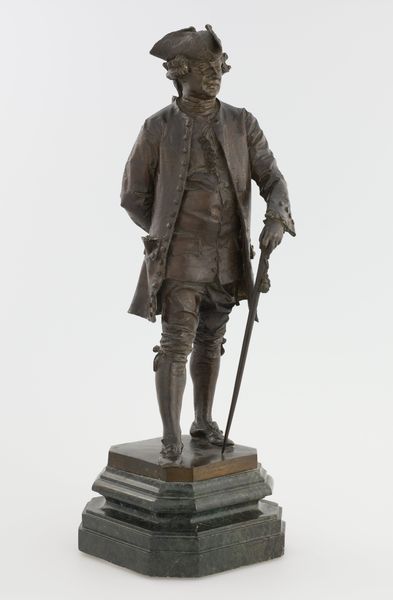
bronze, sculpture
#
portrait
#
sculpture
#
bronze
#
sculpture
#
history-painting
#
realism
#
statue
Dimensions: 77.5 × 50.8 × 33 cm (30 1/2 × 20 × 13 in.)
Copyright: Public Domain
Curator: Standing before us is Augustus Saint-Gaudens' bronze sculpture, "The Puritan," created sometime after 1883. It's currently part of the Art Institute of Chicago's collection. What strikes you immediately about it? Editor: Oh, he's stern, isn’t he? Imposing! All that bronze, like a cloak of judgment. And the downward gaze - makes you wonder what sins he's already tallied up. I bet he smells of damp wool and righteous anger. Curator: Saint-Gaudens crafted multiple versions of this work. The original was commissioned as a public monument for Springfield, Massachusetts. What interests me is how he blends the artistic styles of the Beaux-Arts tradition with realism. It's not idealized heroism, it’s a palpable representation of labor, faith, and authority. Editor: Palpable is right! I can almost hear him lecturing. But I also feel a bit sorry for him. He's got the weight of the world – or at least the colony – on those shoulders. Look at the size of that book; it looks heavy, doesn't it? Maybe he is weighed down by something besides conviction alone, perhaps something more prosaic like leather bound piety? Curator: Absolutely, and that book symbolizes law and governance – the intersection of religious doctrine and social control in Puritan society. Note, too, the materiality of the cane and his attire: each detail speaks to the economics and constraints of colonial life. Bronze as medium enhances both its endurance and its aura of respectability. Editor: I love how his cloak sweeps around him; it creates this feeling of constant movement, like he's always marching toward some unwavering moral goal, or perhaps marching away from joy. He’s less portrait, more walking emblem. It definitely challenges the idea of the stoic, unfeeling Puritan, doesn't it? Curator: Indeed, Saint-Gaudens humanizes a figure that has been flattened by myth and historical reduction. Through his artistry, the work embodies tensions of early American life; community and the individual; austerity and ambition; faith and materiality. Editor: It's left me pondering how much of our perception of figures is crafted through enduring representations like this. It makes me wonder what future generations will make of our bronzed figures of authority and how it reflects our ever-shifting values and visions of virtue? Curator: Food for thought, indeed.
Comments
No comments
Be the first to comment and join the conversation on the ultimate creative platform.
